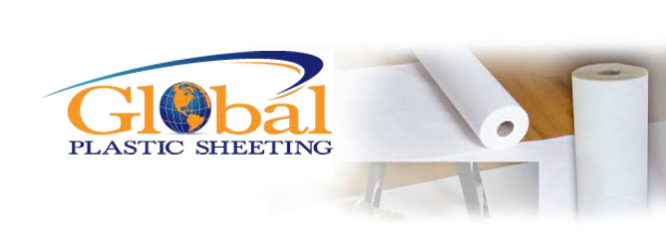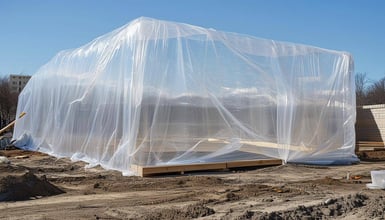The Ultimate Guide to Using Plastic Sheeting for Winter Construction Enclosures
Winter can be a challenging time for construction projects. Cold temperatures, snow, rain, and wind often cause delays and increase risks for workers and materials. However, temporary enclosures made from engineered plastic sheeting offer a practical, cost-effective solution to keep construction on track, even in the harshest conditions. From safeguarding equipment to creating controlled work environments, plastic sheeting transforms winter construction challenges into manageable tasks.
Why Temporary Enclosures Are Essential
Temporary enclosures serve as protective barriers to shield construction sites from weather-related disruptions. These structures, typically made using high-quality plastic sheeting, provide a controlled environment that ensures work continues safely and efficiently. Without enclosures, projects risk delays, material damage, and compromised safety, which can lead to significant cost overruns.
Benefits of Using Plastic Sheeting for Temporary Enclosures
-
Weatherproofing
- Plastic sheeting creates a barrier against snow, rain, and wind, keeping the worksite dry and safe.
- UV-stabilized sheets protect against prolonged sun exposure for outdoor projects.
-
Temperature Control
- Heated enclosures prevent materials like concrete and adhesives from freezing.
- Workers can perform tasks comfortably in cold conditions, boosting productivity.
-
Dust and Debris Containment
- Plastic sheeting prevents dust, dirt, and debris from affecting sensitive materials or equipment.
-
Versatility
- Available in various thicknesses, sizes, and reinforcements, plastic sheeting can adapt to projects of all scales.
-
Cost-Effectiveness
- Temporary enclosures are significantly less expensive than permanent structures while providing similar benefits.
Examples of Winter Construction Projects Using Temporary Enclosures
1. Concrete Curing
- Concrete requires specific temperature and moisture conditions to cure properly.
- Plastic sheeting enclosures trap heat and moisture, preventing cracks or weak spots caused by freezing temperatures.
- Example: A commercial building site in Denver used reinforced 6 mil plastic sheeting to enclose a concrete pour, ensuring consistent curing despite below-freezing temperatures.
2. Painting and Coating Applications
- Painting or coating requires dry and controlled conditions for optimal results.
- Enclosures protect surfaces from moisture and dust, ensuring high-quality finishes.
- Example: A bridge repair project in Seattle used flame-retardant plastic sheeting to cover scaffolding, providing a safe, enclosed workspace for painters during winter rains.
3. Roofing Repairs and Installations
- Temporary enclosures protect roof work from snow and rain, allowing contractors to complete projects without delays.
- Example: A roofing company in Chicago used string-reinforced plastic sheeting to create a weatherproof canopy over a warehouse, enabling uninterrupted installation during a winter storm.
4. Facade Repairs
- Historical building restorations often require protection from winter elements to prevent further damage to the structure.
- Example: A historic courthouse in Boston was fully wrapped in UV-resistant plastic sheeting to shield it from snow while allowing workers to perform exterior repairs.
5. Pipeline Construction
- Plastic sheeting enclosures help keep trenches dry and maintain proper working conditions during pipeline installation.
- Example: An oil pipeline project in Alberta used heavy-duty polyethylene sheeting to cover excavation sites, preventing snow and ice buildup.
How Temporary Enclosures Are Built
Creating a temporary enclosure with plastic sheeting involves several key steps:
-
Planning and Design
- Assess the size and layout of the construction site.
- Determine the type of plastic sheeting required (e.g., flame-retardant, UV-resistant, or reinforced).
-
Frame Construction
- Install a framework using scaffolding, metal poles, or wood to support the sheeting.
-
Plastic Sheeting Installation
- Secure the plastic sheeting to the frame using industrial-strength fasteners or adhesive tapes like Polyken 225 FR tape, ensuring a snug fit to prevent wind damage.
-
Reinforcement
- Use string-reinforced plastic sheeting for added durability, especially in high-wind or heavy snow conditions.
-
Ventilation and Heating
- Include openings for proper ventilation and install heaters if necessary to maintain temperature control.
Why Plastic Sheeting is the Best Material for Temporary Enclosures
Plastic sheeting outperforms alternative materials like tarps or canvas due to its versatility, durability, and affordability. Key advantages include:
- Customizability: Available in varying thicknesses (e.g., 6 mil, 10 mil) and reinforcements to suit specific project needs.
- Waterproofing: Unlike canvas, plastic sheeting provides complete water resistance.
- Flame Retardancy: Options like fire-retardant sheeting ensure safety in high-risk environments.
- Ease of Installation: Lightweight and flexible, plastic sheeting is easy to transport and install, saving time and labor costs.
Choosing the Right Plastic Sheeting for Your Project
When selecting plastic sheeting for temporary enclosures, consider the following factors:
- Thickness: Thicker sheets (e.g., 10 mil) provide greater durability and insulation.
- Reinforcement: String-reinforced or woven sheeting adds strength for larger structures.
- Fire Retardancy: Essential for projects involving heat sources or high-risk environments.
- UV Resistance: Ideal for prolonged outdoor use.
- Color: Clear sheeting allows light transmission, while opaque options offer privacy and insulation.
How Temporary Enclosures Save Money and Time
- Reduced Downtime: Work continues uninterrupted, even during inclement weather.
- Material Protection: Preventing damage to materials saves replacement costs.
- Enhanced Worker Efficiency: Comfortable, controlled environments boost productivity.
- Avoided Penalties: Staying on schedule prevents fines for project delays.
Where to Buy Plastic Sheeting for Temporary Enclosures
Global Plastic Sheeting offers a wide range of engineered plastic sheeting options designed for construction and industrial applications. Our products are available in various thicknesses, sizes, and reinforcements to meet your specific needs. We also provide flame-retardant and UV-resistant sheeting for added safety and durability.
Conclusion
Temporary enclosures using plastic sheeting are a game-changer for winter construction projects. They protect worksites from the elements, ensure materials and workers are safe, and keep projects on schedule. From concrete curing to facade repairs, plastic sheeting offers unmatched versatility and reliability. Invest in high-quality plastic sheeting today to weatherproof your construction projects and drive efficiency all year round.
Ready to protect your winter projects? Contact us at Global Plastic Sheeting to find the perfect plastic sheeting solution for your temporary enclosures!
Please visit the product page by clicking this button. 



